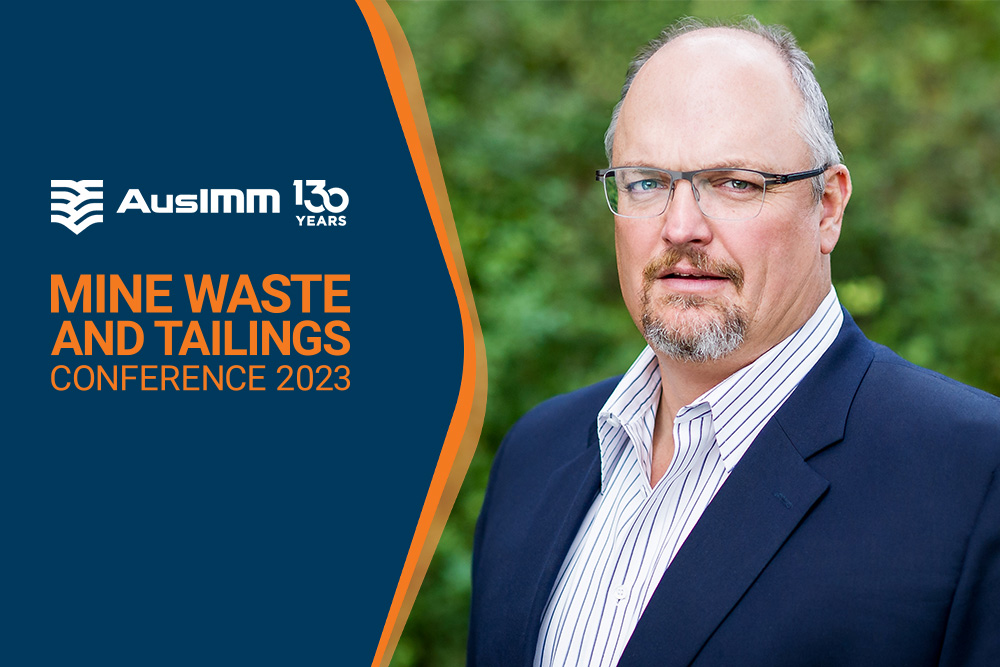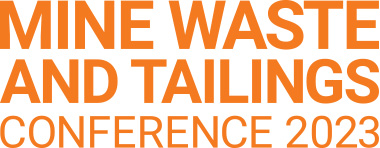Christopher N. Hatton on his career journey and plans for Mine Waste and Tailings 2023
In the lead up to Mine Waste and Tailings 2023, we caught up with keynote speaker Christopher Hatton, Senior Vice President I with the Colorado office of WSP. Chris detailed his career journey and also discussed what he has planned for the conference, including his presentation and involvement in multiple panel discussions.

Can you tell us about your career journey and how you came to be in your current role, Senior Vice President I, Technical Fellow, and Geotechnical Engineer at WSP?
My engineering foundation began in high school, working as a gopher (go for this, go for that) for Woodward-Clyde Consultants in 1980. I worked as an engineering technician for Woodward Clyde and several other small engineering firms for over eight years until I graduated in 1988. I received my undergraduate and master’s degree from Colorado State University.
I began my professional career again with Woodward-Clyde Consultants in 1988. My first job was beach profile sampling for an upstream method hard rock base metal tailings dam. Most of my experience included investigation, design, construction, operations, and closure of tailings dams with a higher concentration in large base metal upstream method tailings dams. I stayed with Woodward-Clyde through an acquisition by URS and later AECOMM.
I moved to a new company in late 2015, starting at the Denver office for Haley and Aldrich, a US East Coast specialty geotechnical engineering firm. I spent 5 ½ years with Haley and Aldrich, growing our office regionally and the company internationally. There, I realised that I needed to partner with and invest in a large global mining company to accomplish my long-term goals.
My journey led me to Golder, which I joined in November 2020. I fell in love with our Denver office and its worldwide interconnected web of state-of-the-art resources and have never looked back.
I became part of WSP through acquisition and was nominated for a technical fellow position soon after. The Denver office cast a net that touches resources in North America, South America, and Australia. My interactions with these professionals are exquisite, and I couldn’t imagine working with a better group of individuals.
You’re a keynote speaker at the Mine Waste and Tailings Conference 2023. Can you provide readers with a sneak peek at what you’re planning to cover?
The Canadian Dam Association (CDA) and the United States Society of Dams (USSD) have assembled a panel of consultants and industry professionals to tackle the subject and generate training and support for the Engineer of Record (EoR).
This keynote lecture captures our ongoing initiative and is my passion. The EoR is such an important concept and position and provides the opportunity outside of the university system to train and develop individuals into tailings professionals.
There is no other opportunity like it in the world, and as a group, we embrace this work. (Reference to CDA/USSD team hyperlink). An overview of the presentation that was provided to AusIMM is provided below.
EoR Terms of Reference - Prenuptial Bliss to Family Legacy
An Owner's Engagement with an Engineer of Record initiates a vital and supportive relationship within the governance rubric. A prelude to the harmonious joining of idyllic partners; till death do us part.
The Terms of Reference for the Engineer of Record is the foundational prenuptial agreement launching our doting couple into wedded bliss. It identifies and defines the vows, providing the charter defining responsibilities, setting performance expectations, and identifying obligations between the mine owner and the Engineer of Record (aka, the fam).
As with any marriage, money, lawyers, and other human elements can complicate the relationship, and the Terms of Reference establish a consistent guidance framework and pre-negotiated approaches to handling relationship performance issues when things get spicy.
Guidance for developing a Terms of Reference is provided and comprises 19 relational categories for consideration; before you “put a ring on their finger.” Challenges facing the industry are presented: is the room for a “plus one” (Designer of Record)? What about Legacy planning? Examples of real-world issues are discussed, including reflection on future challenges.
You’re involved in 2 of the 4 panel discussions at the Mine Waste and Tailings Conference 2023. Can you tell us a bit about what sparked your interest in becoming involved in these?
“What Governs? - GISTM, TMS, ICOLD, ANCOLD, or CDA”
I will be carrying the water for the GISTM. In concept, it is an excellent framework to address some of the issues we have had as an industry. However, the implementation is becoming progressively more clouded, diluting its efficacy. By no means is the GISTM a lost cause, but refocusing and retrenching the intent is required.
My charter addresses dam safety, and I am guided and grounded by Newtonian physics. Anything else outside that, although nice, does not maintain the stability of the facilities. Implementation of that process, whether through geotechnical engineering or the performance of soft communication skills, falls within what I believe to be my purview.
“Risk assessment and ALARP, including disclosure & social risk and impact assessment.”
I started my risk assessment journey assuming the process was very structured and prescriptive. I’ve learned over the years that nothing could be further from the truth. Some aspects of the risk assessment process are necessary and, in some cases, elegant concerning understanding the facility and the stakeholders. However, the risk assessment process and implementation are far less prescriptive and abundantly filled with numerous opinions on how a “correct” risk assessment should be completed and applied. The process becomes even more nebulous when you bring in the concept of ALARP.
The risk process was initially born out of work completed by NASA and through a circuitous route adopted for water dams. The application and mining are much more challenging and complex, given the abundance of industry pundits and the complexities of applying the process to the more complicated retention structures that make up tailings dams in the mining industry. My most significant concern is that the process is becoming commoditised and is starting to lose its way.
What is the biggest challenge associated with tailings management in 2023?
I hate to narrow this down to one challenge because there are many challenges, depending upon the venue and the issues being dealt with. Every tailings dam is unique and different, even tailings dams on the same site. So goes the problems associated with each tailings dam. Setting that aside, in 2023, I see the spectre of financial constraints rearing its ugly head.
We live in a world where global change advocacy and related governance are highly funded and financially lucrative. Environmental activists are pounding the table for lower carbon emissions, digitisation, and electrification worldwide. These groups, however, need to grasp where the base commodities are generated, the financial or social cost, and what it takes to bring raw materials to market. You can only recycle so many pop cans to produce an airplane. The chasm between the safe extraction of raw minerals and application within society is vast and highly politicised. We have much to learn as individuals and as a society. We lack the emotional IQ to engage in a civil conversation.
We are in a worldwide recession with 6% or better inflation, with significant economic impacts. These financial impacts are being pushed downwards, putting pressure against GISTM compliance and other established governance. GISTM came about when the economy was robust, and the ability to implement these systems was generally easily absorbed by larger organisations. We are seeing a backsliding, and we are witnessing the cost-cutting measures start to creep back into the operations.
It will be interesting to watch how this plays out, and will it reaffirm the commitment to GISTM, or will we weed out those unwilling to invest for the long term? I see GISTM as an infinite model and a stretch goal.
What are you looking forward to most about the upcoming Mine Waste and Tailings Conference 2023?
I first attended the Mine Waste and Tailings Conference in 2018. I was astonished at how practical the conference was. That was the first time I had seen a large group of practitioners present papers on technical issues that were fundamentally far more practical and less theoretical.
That experience drove my interest in AusIMM. I look forward to influencing the younger engineers and meeting and breaking bread with my geotechnical brethren and colleagues.
Christopher N. Hatton, MS, PE, is a Senior Vice President I, Geotechnical Engineer, and Technical Fellow with the Lakewood, Colorado, USA Office of WSP. Mr. Hatton entered the engineering consulting industry in the early 1980s and has compiled 35 years of continuous diversified heavy civil and environmental professional engineering experience.
